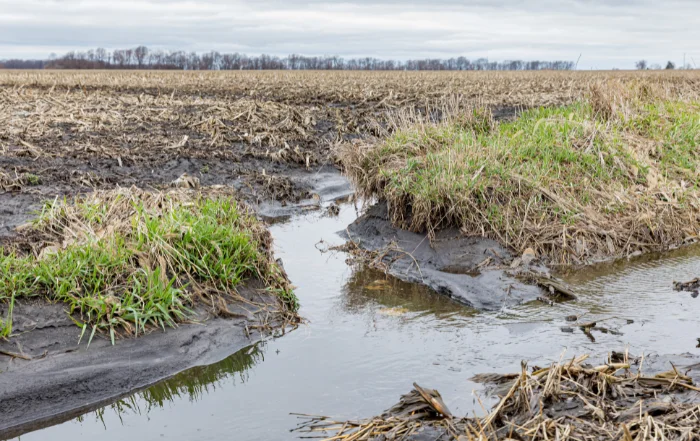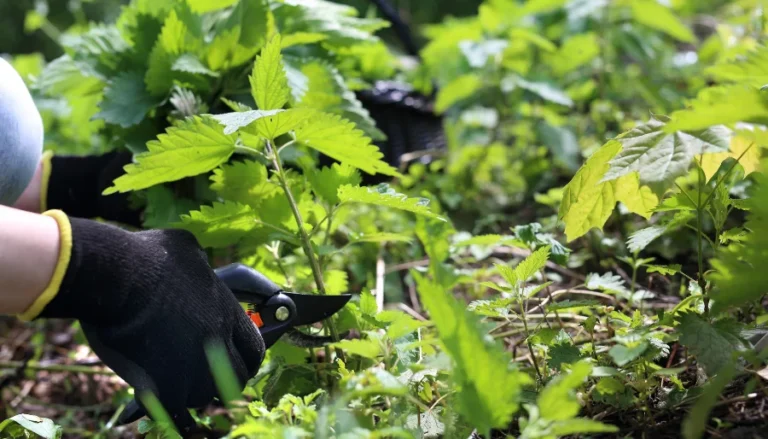In a groundbreaking discovery with far-reaching implications for domestic agricultural policy, global food security, and climate change mitigation, researchers at the University of Massachusetts have revealed shocking rates of soil erosion in the Midwestern United States.
According to their study published in the journal Geology, the current erosion rates in the region are between 10 and 1,000 times higher than the rates observed before agriculture took hold. These newly unveiled pre-agricultural erosion rates, which represent the natural formation rate of soils, are significantly lower than the upper allowable limit of erosion set by the U.S. Department of Agriculture (USDA).
To determine these remarkable findings, the researchers employed a rare element called beryllium-10, or 10Be, which is produced when exploding stars in the Milky Way release high-energy particles known as cosmic rays towards Earth.
These cosmic rays collide with the Earth’s crust, splitting oxygen atoms within the soil and leaving behind minuscule traces of 10Be. By precisely measuring the levels of 10Be, the researchers were able to calculate the average erosion rates over thousands to millions of years.
“We conducted our research in fourteen small remnants of native prairie located in Iowa, Minnesota, South Dakota, Nebraska, and Kansas. We collected deep soil cores from these areas, which date back to the last Ice Age,” explains Isaac Larsen, senior author of the paper and professor of geosciences at UMass Amherst. “Back in our lab, we sifted and purified the soil samples, isolating individual quartz sand grains, and extracted the small amount of 10Be, which was barely enough to fit on the head of a pin.”
The researchers sent these samples to a laboratory, where the individual 10Be atoms were counted. Using this data, Larsen and his colleagues calculated precise erosion rates, spanning from the present day all the way back to the last Ice Age, approximately 12,000 years ago.
“For the first time, we have a clear understanding of the natural erosion rates in the Midwest,” notes Caroline Quarrier, lead author of the paper, who conducted this research as part of her master’s thesis at UMass Amherst. By knowing the erosion rate before Euro-American settlement, we can now quantify the extent to which modern agriculture has accelerated the erosion process.
The results of the study are cause for concern. Larsen explains, “The median pre-agricultural erosion rate we observed across all the sites is 0.04 mm per year.” Any erosion rate higher than this figure indicates that soil is eroding faster than it can be replenished.
Regrettably, the USDA’s current erosion limit is set at 1 mm per year, which is twenty-five times greater than the average rate discovered by Larsen’s team.
Moreover, certain sites are experiencing erosion rates a thousand times higher than the natural rate. These alarming figures highlight that the USDA’s guidelines will inevitably lead to rapid topsoil loss.
The significance of topsoil extends beyond U.S. agriculture, as the annual cost of diminished agricultural productivity and environmental degradation caused by erosion is estimated to be tens of billions of dollars. Additionally, global food security heavily relies on the preservation of fertile topsoil. Furthermore, many climate change mitigation plans depend on carbon sequestration in the soil.
Despite these challenges, there is reason for hope. “There are agricultural practices, such as no-till farming, that we know can significantly reduce erosion,” states Quarrier. “The key lies in reducing our current erosion rates to match natural levels,” Larsen adds.
This research received support from the National Science Foundation, emphasizing the critical role of scientific exploration in understanding and addressing the pressing issues of soil erosion and sustainable agriculture. By recognizing the urgency of the situation and implementing effective measures, it is possible to secure a future where the soil fertility of the US Midwest is preserved, food production is sustained, and the detrimental effects of climate change are mitigated.




















